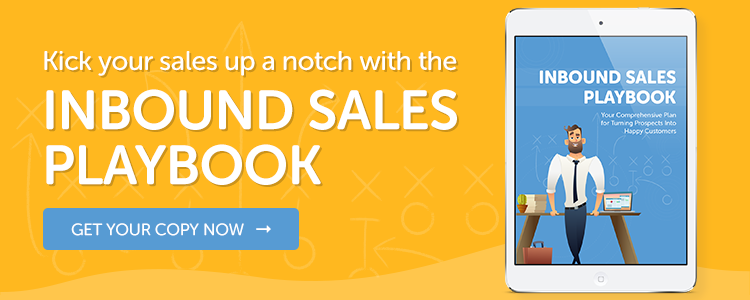Sales collateral is all the material that supports the sale of a specific product or service.
In the olden days, this referred mainly to items like brochures and sales sheets that would be passed directly from the sales representative to the prospective customer. Now, sales collateral can mean all kinds of materials, even those the prospect requests online.
Of course, the line between marketing and sales collateral is blurrier than it used to be.
Here’s a clear way to think about it: Sales collateral helps answer specific objections.
After all, sales pros know more about objections than anyone else. They’re the ones who get to explore the new twists and turns in leads’ thinking right as they develop.
Since sales teams hear about new objections practically in real time, as they happen, they’re at the forefront of dealing with them while marketing addresses them with new content.
So, most sales collateral is focused around the Decision stage of the buyer journey.
By the time leads reach this point, they have:
- Noticed a business problem and defined exactly what it is (the Awareness stage).
- Developed buying criteria and a list of possible solutions (the Consideration stage).
- Narrowed down the original list of potential solutions to a few (early Decision stage).
And now, with the help of your sales collateral, they’re figuring out which of those potential solutions is the ideal one for them. To get there, they need to understand how your product will work within their own business context. Your specialized, personalized content helps them do it.
Here are five pieces of sales collateral you should develop to close more deals.
1. Product Videos
Product videos have a tremendous impact on conversions when used in landing pages where a buyer can make a near-immediate decision. What many folks don’t realize, though, is that they are just as powerful as part of the sales collateral for a long-term considered purchase.
Product videos should demonstrate an offering’s unique value and ease of use. Ideally, customer segmentation will help you stay laser-focused on a single buyer persona for each video. This is essential, because most viewers will want to stick to videos of 10 minutes or less.
2. Product Demonstrations
While an on-site demonstration is the traditional way to show off everything a B2B app can do, a self-contained and self-guided product demo can be just as effective. Not only can you calibrate the experience for the customer’s exact needs, but there’s no scheduling conflicts to worry about.
A self-paced product demo also has the added bonus of segueing very easily into another sales contact. For example, you can present the user with a calendar to set up a quick wind-down chat with you after the product exploration is finished.
Be certain your demo software notifies you when a prospect accesses and uses the demo so you can follow up proactively, even if they don’t choose to do so.
3. Specification Sheets
If you’re selling software or equipment of any kind, you want to verify that decision-makers have all the specs at their fingertips.
While it’s often a good idea to make spec sheets available on your site, be extra careful to pass them on during the discovery session or shortly afterwards. This is essential for consensus sales where technical experts are involved.
4. Competitor Comparisons
This is the other half of the coin for your specification sheet. Engineers, whether mechanical, electrical, IT, or software, tend to like sticking to the facts. Still, if the facts are that your solution beats your competitor’s, there’s no reason not to emphasize the point.
A one-page comparison sheet can be as simple as a side-by-side feature chart like you often see on a product landing page. It can also be detailed, depending on the size of your space and the number of alternatives. Tailor your approach to the customer’s level of knowledge in the space.
5. Case Studies
The good old case study remains the undisputed king of Decision stage sales collateral.
When a case study reaches its full potential, it does all the following:
- Shows the reader exactly how a company like theirs benefited from your product.
- Provides the reader with believable testimonials from figures that they relate to.
- Positions your solution as the key to achieving tangible results that they want.
Like the sales team itself, sales collateral helps seal the deal after a lot of hard work has been poured into a relationship. Don’t collapse just a few feet from the finish line: Make sure you’ve got robust sales collateral for the end of the buyer journey.


Rob Steffens
I am the Director of Marketing here at Bluleadz. I'm a huge baseball fan (Go Yankees!). I love spending time with friends and getting some exercise on the Racquetball court.